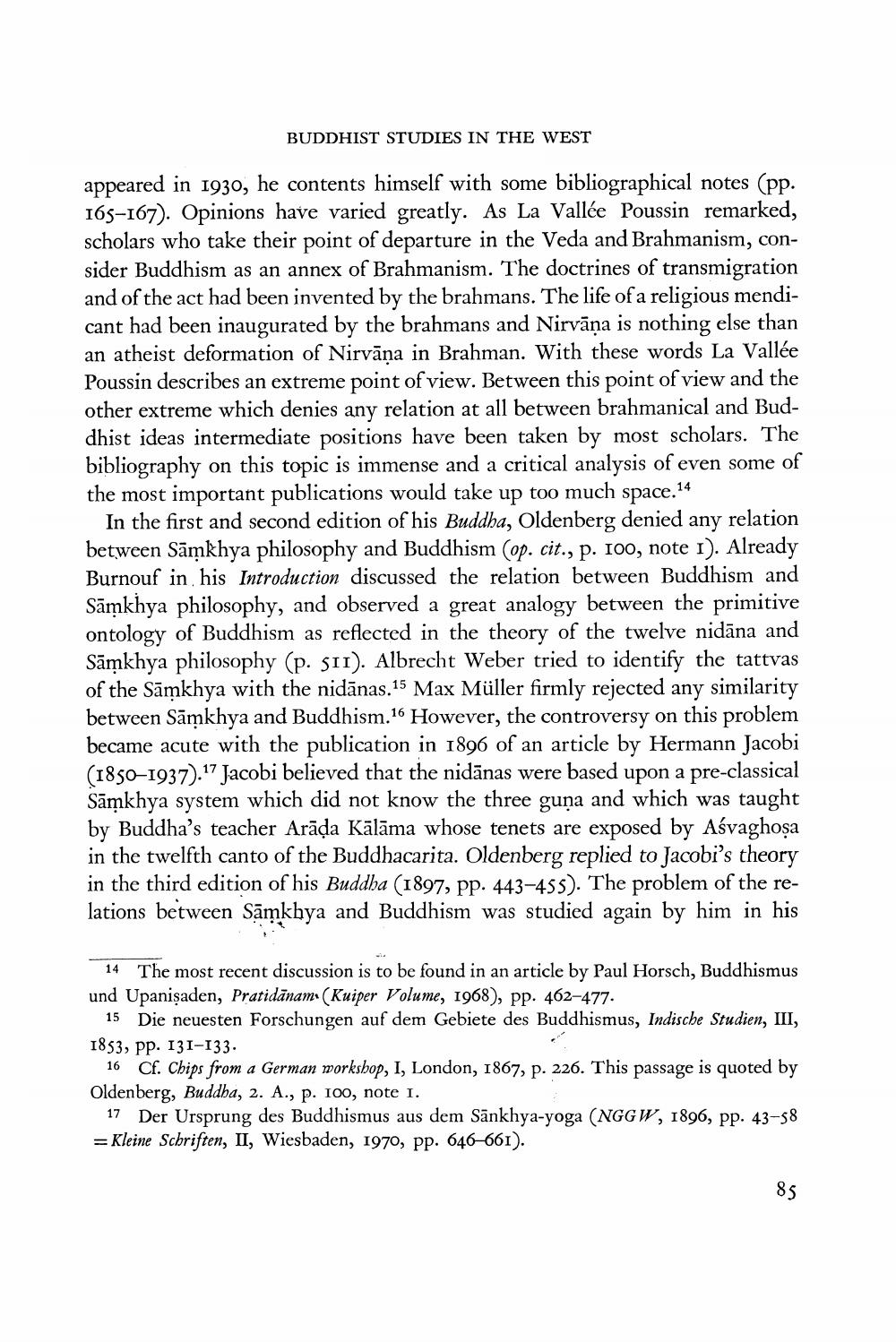________________
BUDDHIST STUDIES IN THE WEST
appeared in 1930, he contents himself with some bibliographical notes (pp. 165-167). Opinions have varied greatly. As La Vallée Poussin remarked, scholars who take their point of departure in the Veda and Brahmanism, consider Buddhism as an annex of Brahmanism. The doctrines of transmigration and of the act had been invented by the brahmans. The life of a religious mendicant had been inaugurated by the brahmans and Nirvāṇa is nothing else than an atheist deformation of Nirvāṇa in Brahman. With these words La Vallée Poussin describes an extreme point of view. Between this point of view and the other extreme which denies any relation at all between brahmanical and Buddhist ideas intermediate positions have been taken by most scholars. The bibliography on this topic is immense and a critical analysis of even some of the most important publications would take up too much space.14
In the first and second edition of his Buddha, Oldenberg denied any relation between Sāmkhya philosophy and Buddhism (op. cit., p. 100, note I). Already Burnouf in his Introduction discussed the relation between Buddhism and Sāmkhya philosophy, and observed a great analogy between the primitive ontology of Buddhism as reflected in the theory of the twelve nidāna and Sāmkhya philosophy (p. SII). Albrecht Weber tried to identify the tattvas of the Sāmkhya with the nidānas.15 Max Müller firmly rejected any similarity between Sāmkhya and Buddhism.16 However, the controversy on this problem became acute with the publication in 1896 of an article by Hermann Jacobi (1850-1937)."7 Jacobi believed that the nidānas were based upon a pre-classical Sāmkhya system which did not know the three guna and which was taught by Buddha's teacher Arāņa Kālāma whose tenets are exposed by Aśvaghoșa in the twelfth canto of the Buddhacarita. Oldenberg replied to Jacobi's theory in the third edition of his Buddha (1897, pp. 443-455). The problem of the relations between Samkhya and Buddhism was studied again by him in his
14 The most recent discussion is to be found in an article by Paul Horsch, Buddhismus und Upanişaden, Pratidānam (Kuiper Volume, 1968), pp. 462-477.
15 Die neuesten Forschungen auf dem Gebiete des Buddhismus, Indische Studien, III, 1853, pp. 131-133.
16 Cf. Chips from a German workshop, I, London, 1867, p. 226. This passage is quoted by Oldenberg, Buddha, 2. A., p. 100, note i.
17 Der Ursprung des Buddhismus aus dem Sānkhya-yoga (NGGW, 1896, pp. 43-58 =Kleine Schriften, II, Wiesbaden, 1970, pp. 646-661).
85




